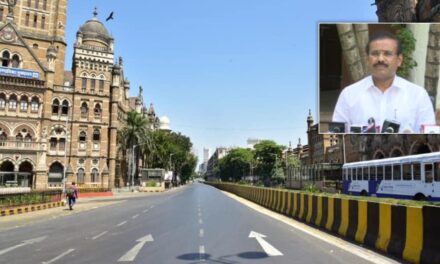
Explained: What is GST (Goods and Services Tax)?
Posted by Local Press Co Staff | Aug 4, 2016 | Trending


Representational Image. Picture Courtesy: Raigarh Online
On Wednesday, the Rajya Sabha cleared the GST (122nd Constitutional Amendment) bill, possibly the biggest reform in India’s indirect tax structure since the opened up two decades back.
Here’s a basic overview of everything you need to know about GST.
What is GST?
# Stands for Goods and Services Tax
# Works on the concept of ‘one nation, one tax’
# An all-inclusive tax that will replace other indirect taxes
# Applicable on both goods and services
# Works on a dual structure of Central CST and State GST
How does it work?
GST is a single tax on the supply of goods and services, right from the manufacturer to the consumer. Credits of input taxes paid at each stage will be available in the subsequent stage of value addition, which makes GST essentially a tax only on value addition at each stage. The final consumer will thus bear only the GST charged by the last dealer in the supply chain, with set-off benefits at all the previous stages.
In other words, the prices that we pay for goods and services have the taxes embedded in them. Mostly, the consumers are not even aware of or ignore the tax they pay for things they buy because there is a maze of indirect taxes such as sales tax, excise and VAT, which leads to increased complexity. The GST seeks to untangle this and subsume all in one single tax, thereby making India an economically unified market.
But, how does it really work?
Consider the following case (example by PRS Legislative):
Raw material cost: Rs 100
Manufacturer margin: Rs 20
Retailer margin: Rs 20
Tax: 10%
Under current tax structure:
On the Rs 100 raw material, the manufacturer pays Rs 10 as tax. Then the manufacturer adds Rs 20 value. To this the manufacturer adds Rs 2, which is the CENVAT or central Value Added Tax. In the example, the CENVAT is assumed at 10 percent of the Rs 20 value added by the manufacturer. So the cost for the retailer is Rs 132, which is Rs 100 (raw material) + Rs 10 (tax on raw material) + Rs 20 (manufacturer value addition) + Rs 2 (tax on the value addition). When the retailer sells it to the consumer, he adds his own margin at Rs 20. This takes the price to Rs 152. Add 10 percent sales tax to this, which increases the price by Rs 15.2. Thus the final price the consumer pays will be Rs 167.2.
Total tax paid by consumer: Rs 27.2.
Under GST structure
GST has an input tax credit system, implying that each person pays tax only on the value added by them. So the overall tax for the consumer comes down. In the above example, when the retailer sells the tax is applied only on his margin of Rs 20 and not on the Rs 132 which is the cost he paid to the manufacturer. So the tax the consumer pays is much lower at Rs 14 – Rs 10 (the tax paid by manufacturer when the raw material was bought) + Rs 2 (the tax on the manufacturer’s value addition) + Rs 2 (the tax paid on the margin of the retailer).
Total tax paid by consumer: Rs 14.
Simply put, under the current system, there is the cascading effect or double taxation – the consumer pays tax on tax already paid by the manufacturer which is embedded in the prices. That is what makes the consumer higher tax, and in turn pay higher prices. With GST, this anomaly will be corrected, thus bringing down the end price.
Which taxes will GST replace?
Central taxes GST will replace
# Central Excise Duty
# Additional Duties of Excise
# Special Additional Duty of Customs (SAD)
# Service Tax
# Cesses and surcharges on supply of goods or services
States taxes GST will replace
# State VAT
# Central Sales Tax
# Purchase Tax
# Luxury Tax
# Entry Tax
# Entertainment Tax
# Taxes on advertisements, lotteries, betting & gambling
# State cesses and surcharges
How will it help the economy?
# Will disincentivize tax evasion
# Lower prices over a period of time
# Help curb ‘underground’ transactions
# Allow regularization and simplification of business
# Add to the nation’s GDP
Share:












